Audi Repair Shop Doylestown
Call 267 279 9477 to schedule a appointment
There are plenty of non-luxury compact SUVs that when fully loaded are priced right around where the 2020 Audi Q3 begins. This, despite it being smaller and less equipped than the range-topping Mazda CX-5’s and Honda CR-V’s of the world. To some, that’ll make for dubious value, but as expected for a luxury car, the Q3 justifies its price premium with superior interior quality, cutting-edge technology, stronger performance and, of course, a ritzier brand image. The original Q3 really only offered the latter, but the new one introduced last year finally comes across as the real deal.
It has plenty of competition among luxury players, and although generally well-executed, the 2020 Q3 also has enough demerits (cargo space, fuel economy, steering and transmission response, tech functionality) that making sure to also check out the BMW X1 and X2, Mercedes-Benz GLB 250 and Volvo XC40 is a must. One thing the Q3 does have going for it, though, is a greater amount of standard equipment for a base price that effectively undercuts those rivals. So while some may view the Q3’s value as dubious, in the realm of luxury vehicles, it’s actually pretty good.
What’s new for 2020?
After being completely redesigned last year, the Q3 is unchanged for 2020.


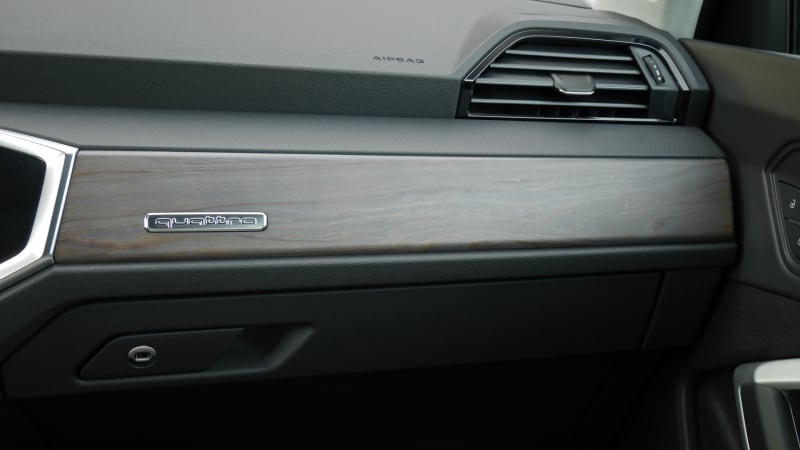
What’s the Q3’s interior and in-car technology like?
Like other Audis, the Q3 interior is tech-focused and has a rather architectural design with lots of sharp angles. It’s a bit reminiscent of the 1980s. The materials are just OK for its price point. There are more hard plastics than you’ll find in other Audis, and the token wood strip on the right side of our test car’s dash is the epitome of the term “tacked on” as no other wood appears elsewhere in the cabin. The $150 optional Alcantara Orange package that adds a welcome splash of color to the interior is more appropriate for the environment, though we wish it were available in additional hues.
Audi has packed the interior with technology, including a standard 10.25-inch digital instrument display and an 8.8-inch touchscreen presented high and within easy reach. Both can be upgraded, however, to Audi’s Virtual Cockpit system that increases the instrument unit to 12.3 inches and the center touchscreen to 10.1. We’ve only tested this latter setup and found that the resolution is exquisite, it reacts quickly to inputs and even goes so far as clicking when a virtual button is pressed in the same way as Audi’s real buttons have done for years now. Fancy. Feature content is also strong as Apple CarPlay and Android Auto are included, and we love that the car automatically pairs your phone to work wirelessly with CarPlay after plugging it into a USB port just once. This is in contrast to BMW’s convoluted process.
The touchscreen’s functionality isn’t perfect. We like that the menu options always remain in a channel on the screen’s left side, reducing the back-and-forth between menus. However, there are some foibles associated with the audio controls (we couldn’t figure out how to keep the radio preset list onscreen) and there’s no getting around the fact that a touchscreen draws your eyes away from the road longer. Audi’s old knob-and-screen MMI system could be operated with less glancing at the dash.
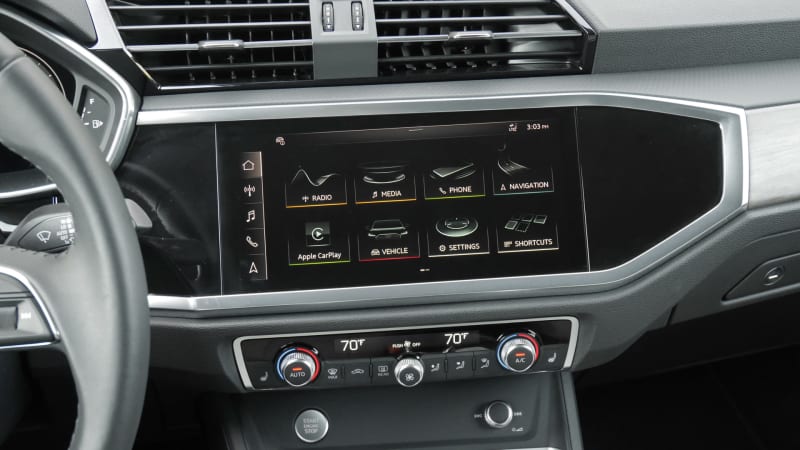
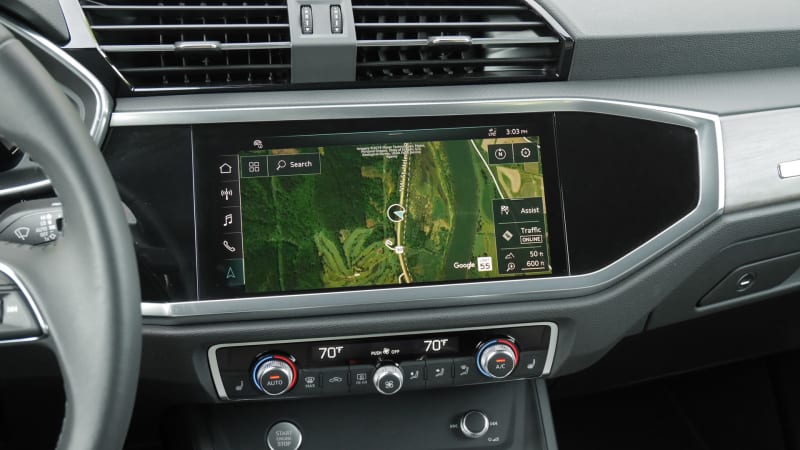
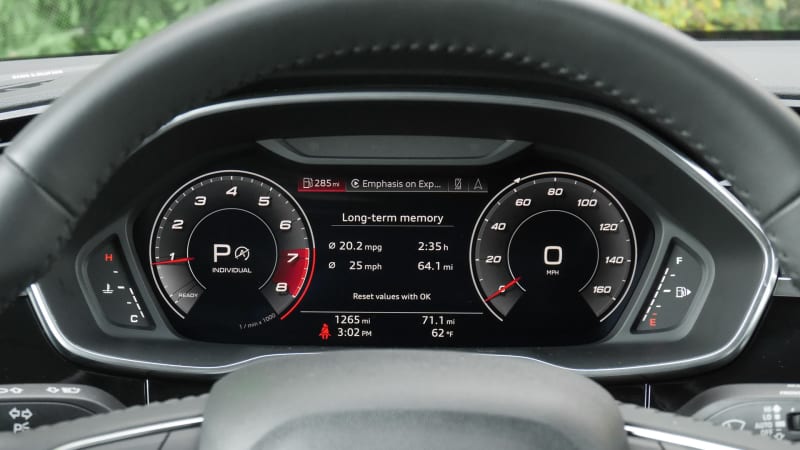

How big is the Audi Q3?
The new Q3 is a larger, more practical car than the one it replaced last year. Those upgrading to the new model will find that the 2020 model is not only much nicer inside, but more comfortable and spacious as well. When compared to its competition, however, it’s basically par for the course, with backseat leg- and headroom comparable to the BMW X2 and Volvo XC40. The BMW X1 and new Mercedes-Benz GLB 250 are more spacious.
That back seat slides forward to increase cargo capacity, which we suspect must be done in order to achieve the substantial on-paper claim of 23.7 cubic feet of space behind the back seat. Otherwise, it’s pretty cramped back there, as we discovered in our Audi Q3 luggage test. Maximum cargo capacity of 48 cubic feet is much less than the X1 and GLB.
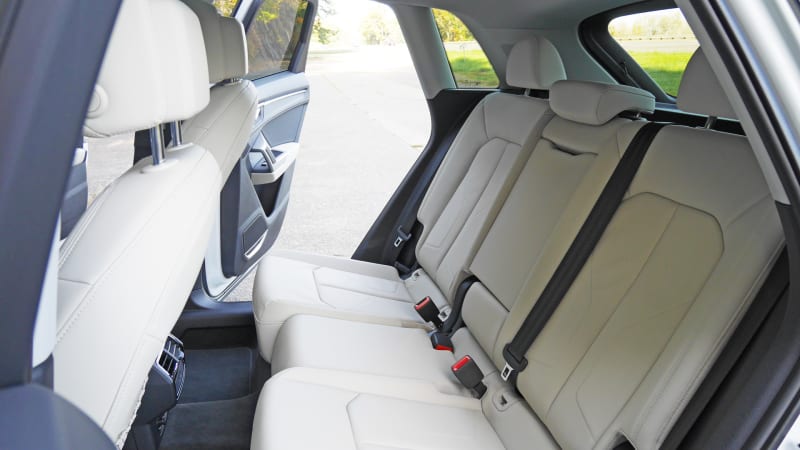
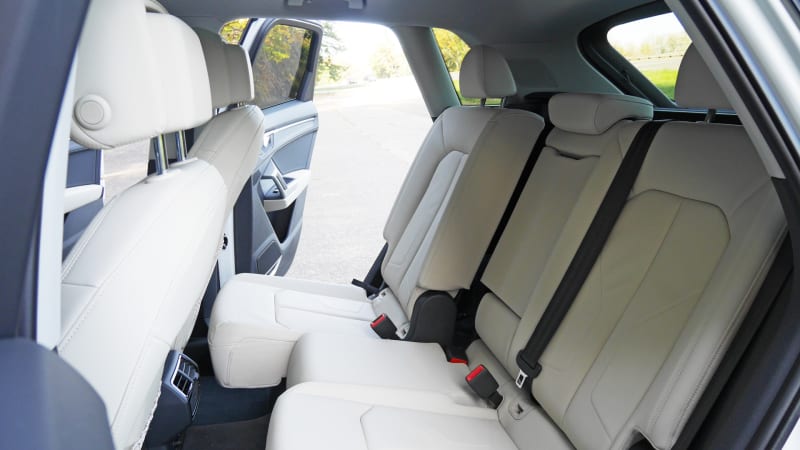
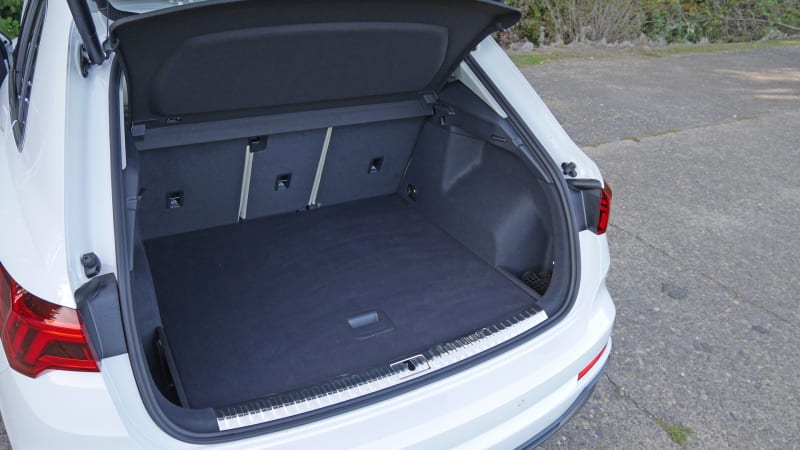
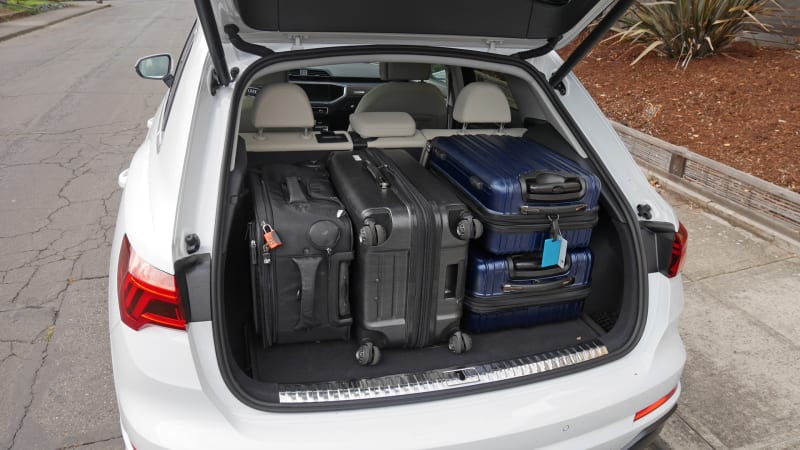
What’s the Q3’s performance and fuel economy?
The Q3 offers only one engine: a 2.0-liter turbocharged inline-four that produces 228 horsepower and 258 pound-feet of torque. That’s basically equal to its primary competitors from BMW and Mercedes, and although its 7-second 0-60-mph time is similarly equal to the GLB, the lighter X1 and X2 are a bit quicker. Unlike all of the above, however, the Q3 comes standard with all-wheel drive. An eight-speed automatic transmission is also standard.
Fuel economy is 19 mpg city, 27 mpg highway and 22 mpg combined. This is notably lower than the all-wheel-drive versions of the X1, GLB 250 and Volvo XC40, which are in the range of 25-26 mpg combined. However, there’s a silver lining. The Q3 runs on regular fuel rather than premium like the others, meaning you’ll likely end up saving money despite burning more gas.
There is a high-performance Audi RS Q3, but it won’t be sold in the United States.
What’s the Q3 like to drive?
Acceleration is invigorating from the turbo four-cylinder, getting up to speed smartly in a way that’s appropriate and expected for a luxury vehicle. The engine note is a bit louder and growlier than expected, especially when compared to Audi’s A4, Q5 and Allroad. The transmission is also an issue. Both during our first drive of the Q3 in Nashville and a lengthier test thereafter, we noticed significant hesitation between the accelerator being planted and the engine responding. We didn’t always trust that it would respond quickly enough when pulling into traffic, and there’s some low-speed jerkiness as well. This caused one of our editors to assume the Q3 has a dual-clutch automated manual, which can be prone to such behavior, but there’s actually a traditional eight-speed automatic at work.
Handling is quite good, as the suspension takes a set nicely and maintains composure around corners. Despite having a fixed suspension with no adaptability or multiple settings, it manages to provide both capable handling and an accommodating, well-damped ride. As always, Audi’s Quattro all-wheel drive deserves praise, as you can really feel the power being sent rearward to help power you through and out of corners.
The steering is less praiseworthy, as it’s utterly numb at slower speeds. There’s being lighter for parking reasons, as Audis have been for a decade, but then there’s this dead-fish business that lasts well into around-town speeds. We ended up driving in Dynamic mode just to mitigate it, which is something we rarely need to do these days. It’s perfectly precise at higher speeds, but is still bereft of feel. In this way, the Q3 drives more like a Volkswagen than an Audi (which, under the skin, is actually pretty accurate).
What more can I read about the Audi Q3?
After getting our first drive in a European-spec Q3, this was our first go of the American version on American roads. We include more in-depth information about its specs, engineering, design and what changed.
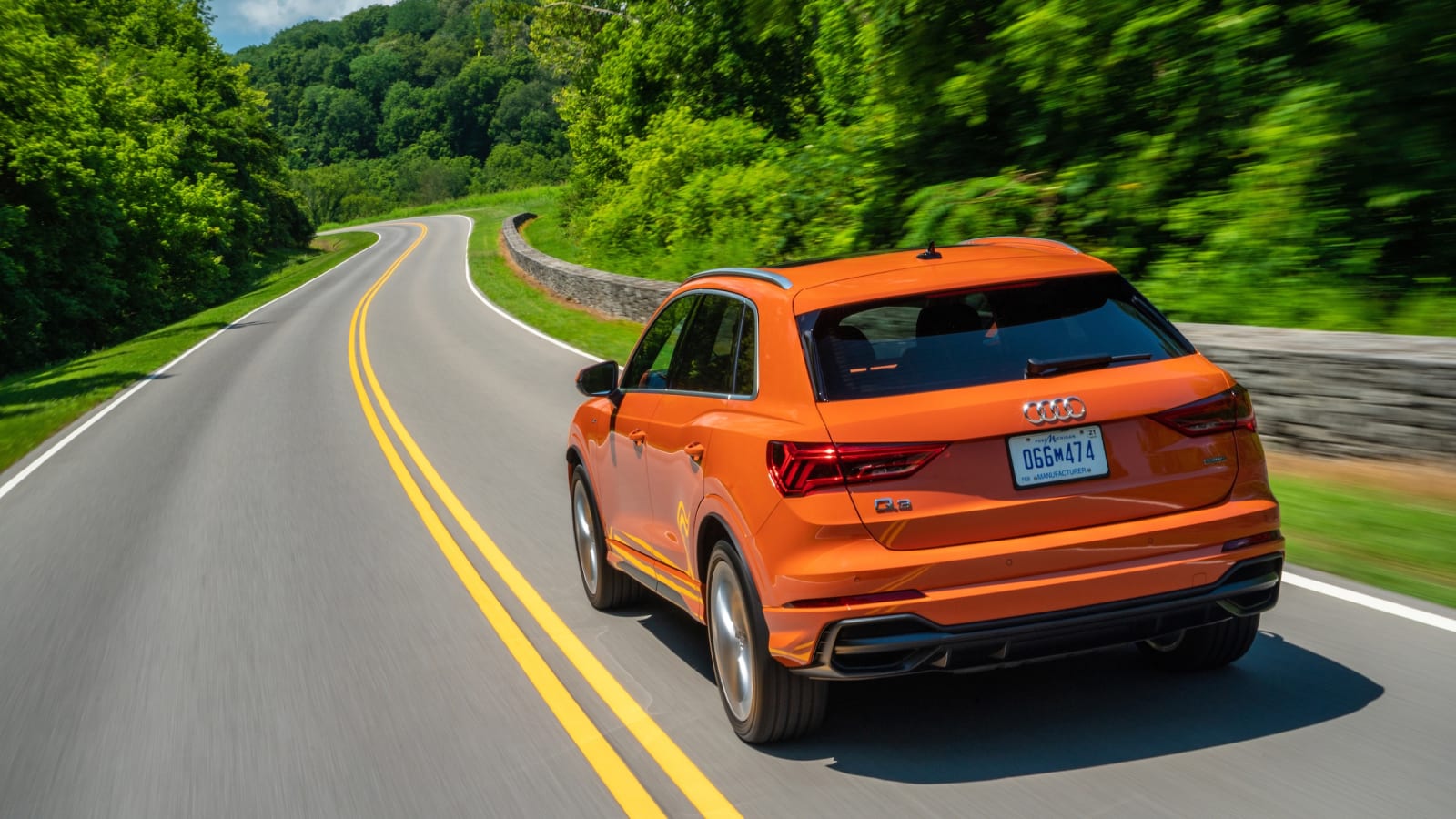
We see how much luggage can fit behind the Q3’s back seat.
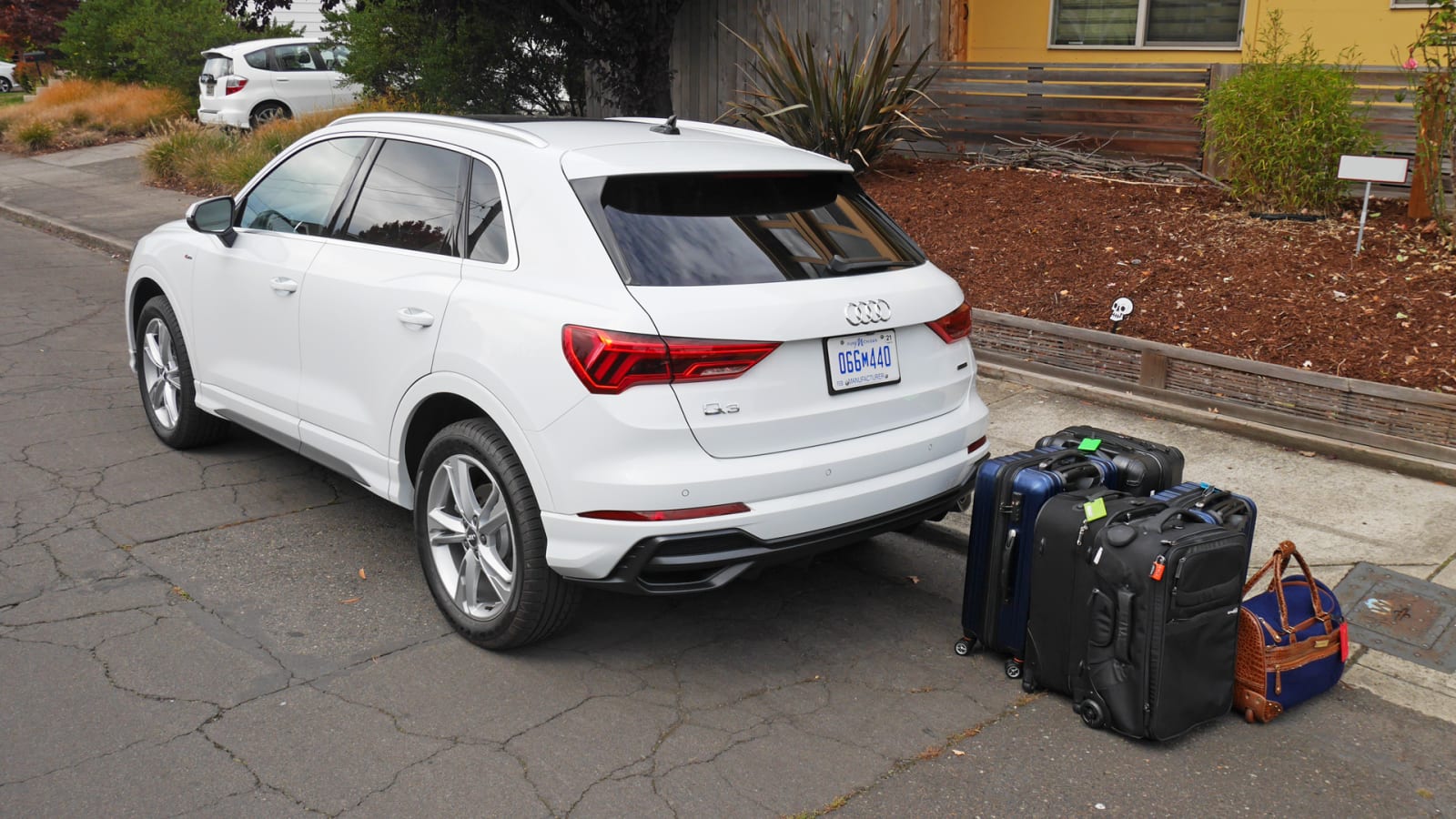
What features are available and what’s the Audi Q3’s price?
Pricing starts at $35,695 for the base Q3 Premium trim, including the $995 destination charge. That’s less money than its German competitors, yet it includes more standard equipment. And when you factor in its standard all-wheel-drive, it costs less than a comparable Volvo XC40, too.
That standard equipment includes 18-inch wheels, automatic LED headlights and wipers, a power liftgate, a panoramic sunroof, three-zone automatic climate control, heated eight-way power front seats, leather upholstery (all of the above competitors have non-cow substitutes standard), the sliding and reclining 40/20/40 back seat, the 10.25-inch all-digital instrument panel, an 8.8-inch touchscreen, four USB ports (one regular and three USB-C), Apple CarPlay, Android Auto and a 10-speaker sound system. We would consider adding the Convenience package that adds blind-spot and lane-departure warning plus proximity entry and satellite radio, but you’d likely be perfectly happy with this base model. The Premium Plus ($38,795) basically just adds those Convenience items while granting access to the even fancier tech that comes standard on the range-topping Prestige S line ($43,895) along with sportier styling and further upgrades like a Bang & Olufsen sound system. Even this fully loaded version represents good value relative its main competitors.
What are the Q3’s safety equipment and crash ratings?
Every 2020 Q3 comes standard with a low-speed forward collision warning and automatic emergency braking system called Audi Pre-Sense. Optional equipment includes blind-spot, rear cross-traffic and lane-departure warning systems, and rear-side airbags (a rare feature for any car).
The Audi Q3 was named a Top Safety Pick by the Insurance Institute for Highway Safety for this best-possible performance in all crash tests and for its frontal crash prevention system. Its optional headlights received the best-possible “Good” rating, but its standard LED units got the worst rating of “Poor.”
Related Video:
from Autoblog https://ift.tt/2Mg5lSZ
